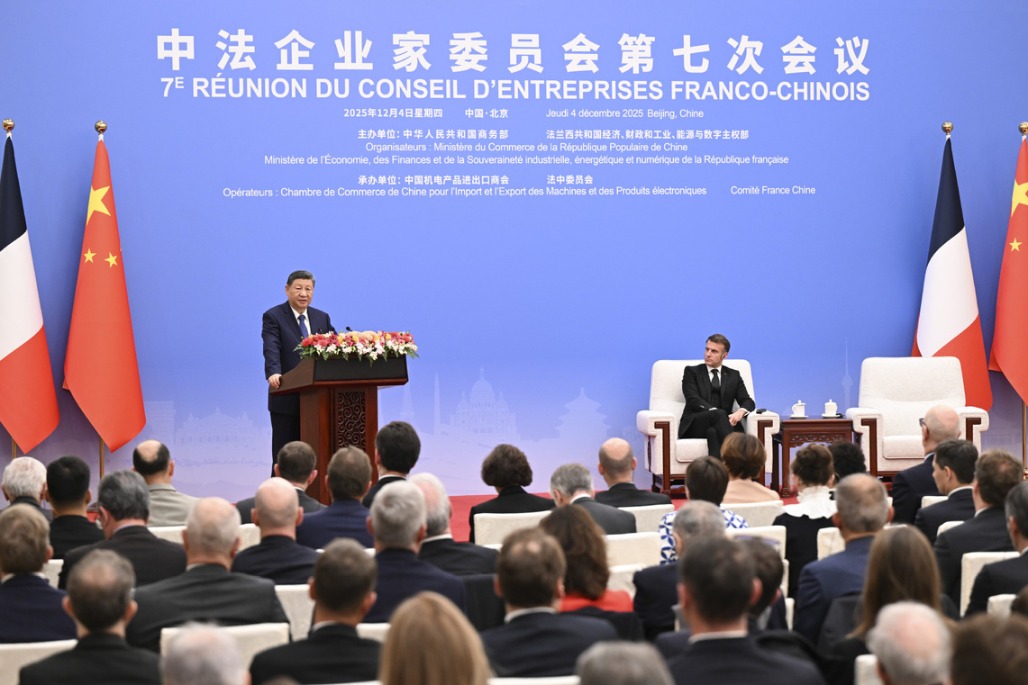China and the World Trade Organization
China Daily | Updated: 2018-06-29 08:25
III. China's Significant Contribution to the World after Accession to the WTO
China steadfastly pursues a mutually beneficial opening-up strategy, upholds the WTO's principle of free trade, and has lived up to its responsibilities as a major country in the process of opening-up. From its WTO accession in 2001 to the Belt and Road Initiative in 2013, China has embraced the world with open arms, made a significant contribution to promoting international trade and increasing global well-being, and become a key anchor and driver for the world economy.
1. Boosting world economic recovery and growth
Since its accession to the WTO, China has accelerated its reform and opening-up process and economic growth. China's development is a forceful driver of global economic growth.
In 2016, China's GDP accounted for 14.8 percent of the world total, up by 10.7 percentage points over 2001, calculated at exchange rates. Since 2002, China's contribution to global economic growth has approached 30 percent on average. The Chinese economy has become a major engine for global economic recovery and growth.
China has quickened its pace in promoting new industrialization, IT application, urbanization, and agricultural modernization, created enormous opportunities for consumption and investment, and generated more jobs for the world. According to a report released by the International Labor Organization, "Effects of China on the Quantity and Quality of Jobs in Latin America and the Caribbean", China created 1.8 million jobs for Latin America and the Caribbean region from 1990 to 2016.
China's rapid development has made tremendous contributions to the cause of global poverty reduction. Over the past 40 years of reform and opening-up, the Chinese people have emerged from scarcity to abundance and from poverty to moderate prosperity. According to current UN standards, more than 700 million Chinese people have been lifted out of poverty, accounting for more than 70 percent of the global total over the same period. This represents the largest contribution to poverty reduction in the world.
2. Foreign trade development benefiting the world
Since China's entry into the WTO, China's foreign trade has maintained sustained development, benefiting more than 1.3 billion Chinese and other peoples across the world.
Confronted with unprecedented difficulties and challenges including the global financial crisis in 2008, China has taken effective measures to stabilize and revitalize its foreign trade. According to WTO statistics, China's imports accounted for 10.2 percent of the world total merchandise import in 2017, and its exports 12.8 percent, making China a major trade partner of more than 120 countries and regions. China's exports have provided high-quality and inexpensive products to businesses and people around the world. From 2001 to 2017, China's imports increased by an annual average of 13.5 percent, 6.9 percentage points higher than the global average; and China has become the world's second largest importer. Since 2009, China has been the largest export market for the LDCs, and absorbed 20 percent of their exports.
China's services imports increased from USD39.3 billion in 2001 to USD467.6 billion in 2017, up by an annual average of 16.7 percent, and accounting for nearly 10 percent of the world total. Since 2013, China has been the world's second largest service importer, making significant contributions to stimulating consumption, creating jobs and boosting economic growth in the exporting countries. Taking tourism services as an example, China has been the world's largest source of outbound tourists for many years in a row. In 2017, outbound tourist trips made by Chinese citizens exceeded 130 million person-times, generating USD115.29 billion of overseas tourism spending.
China's innovation in trade models has also given new impetus to world trade growth. Cross-border e-commerce and other new types and modes of foreign trade have flourished in China, providing an ever-expanding market to its trading partners. In 2017, the value of imported and exported goods in cross-border e-commerce checked and released by China Customs totaled RMB90.24 billion, up by 80.6 percent on yearly basis, of which imports stood at RMB56.59 billion, up by 120 percent compared with the previous year.
























